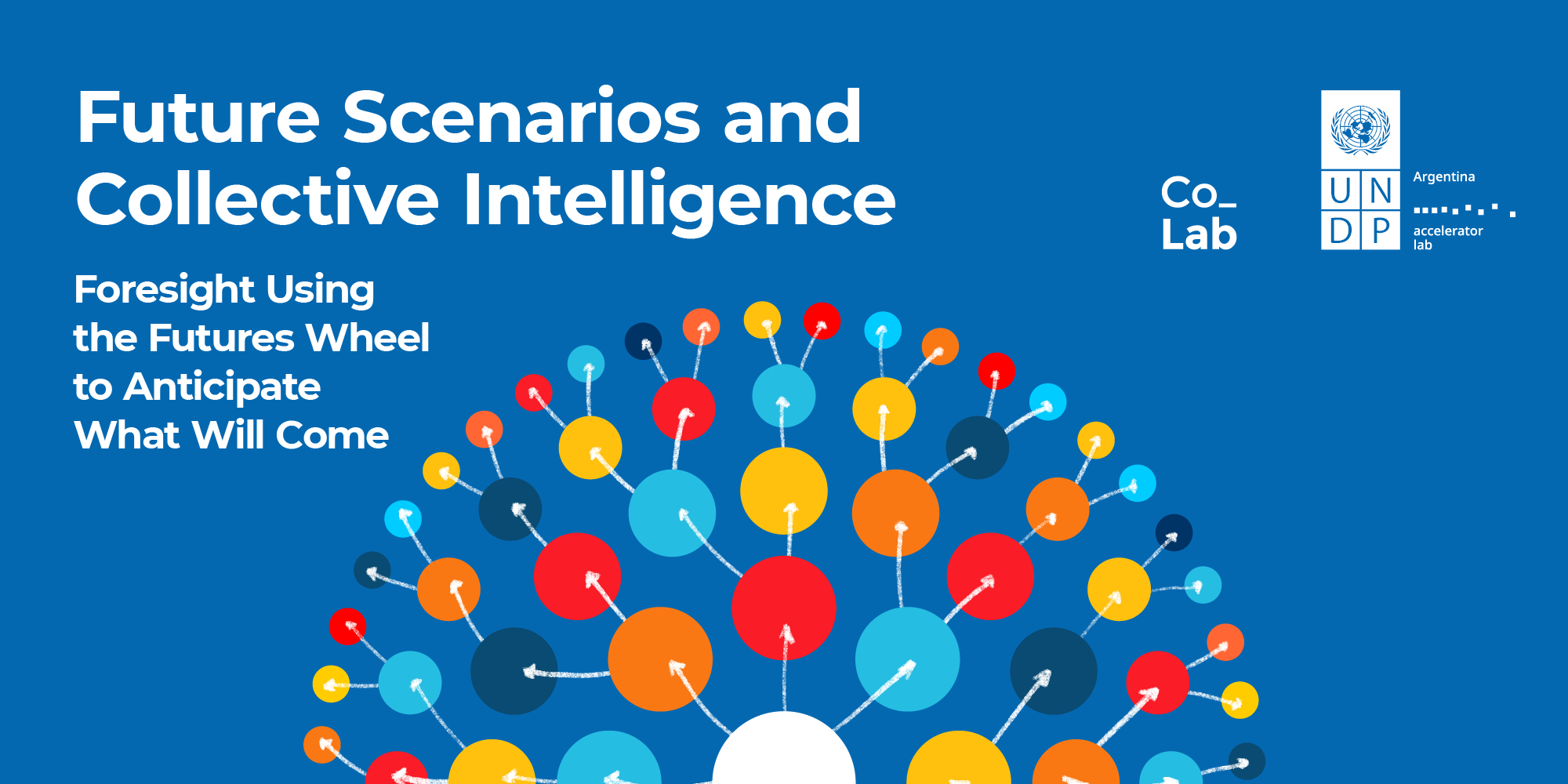How can private and public sector teams anticipate possible changes to be able to quickly adapt to them?
Foresight Using the Futures Wheel to Anticipate What Will Come Next
How can private and public sector teams anticipate possible changes to be able to quickly adapt to them? The exponential development of technologies, different online social movements, and the growing effects of climate change, among other phenomena, speed up the pace of change and force us to be always ready to face them. We are immersed in times of volatility, uncertainty, complexity, and ambiguity (VUCA). Being prepared for- or adapting to successive transformations is not easy, but it is possible!
In 2020, the COVID-19 pandemic sped up and deepened the creation of VUCA contexts at a global level. Therefore, every team and organization, regardless of their size or sector, had to rethink its structures, dynamics, and decision-making processes to respond to the growing complexity. Being able to adapt has always been crucial to the operation and evolution of organizations and States. This means that building resilience ‒understood as the ability of people and/or organizations to face adverse circumstances and recover from them quickly without suffering significant impact or permanent effects‒ is more important than ever before.
To be resilient, we should think strategically and anticipate events analyzing how the future can develop. This will allow us to have a proactive attitude and focus on transforming future threats into possible opportunities to be harnessed. One of the simplest tools to collectively think about possible future scenarios is >> the so-called Futures Wheel.
The Futures Wheels allow us to look into the future collaboratively and visually to understand the possible consequences of unexpected phenomena.
It is a versatile tool with which we can analyze the consequences of possible future decisions, an important event, or a trend.
To enrich the debate, we recommend using the wheel with subject-matter experts regardless of their knowledge on future studies.
To use the Futures Wheel, follow these steps:
1. Start by placing the item to be analyzed in the center of the wheel.
2. Participants are then asked to fill in the potential direct consequences of this item.
3. Next, a second wheel ring is made where the direct consequences of the first wheel are filled in, and so on.
4. Then a new analysis is carried out in which the most relevant or interesting consequences are selected prioritizing their quality. These consequences are further analyzed thoroughly in a debate.
The Futures Wheel is a simple, quick, and collaborative tool. At Co_Lab, we have created an open-access template for free use. And we also share the results that we got from our analysis of the possible future consequences of Citizen Science. Please feel free to use this template and share with us how your process goes. And if you are interested in this topic, please register here. We will keep you posted on a Futures Handbook that will be released in the coming months. This Handbook will explain this and other foresight techniques in detail, on top of proving information about emerging signals in our country. The VUCA contexts are here to stay, but there is no reason to worry about‒ if we have a proactive attitude in the face of change, we will be prepared. We have no control over our society’s transformations, but we can get ready and harness them as opportunities rather than letting them become problems.
The co-authors of this blog are Matias Acosta, Head of Exploration of UNDP Argentina, and Paula Lopez Lanhozo, Independent Consultant on Design Strategy and Foresight.

 Locations
Locations




